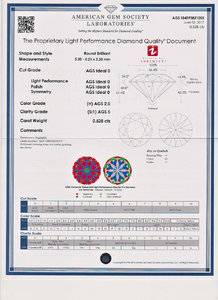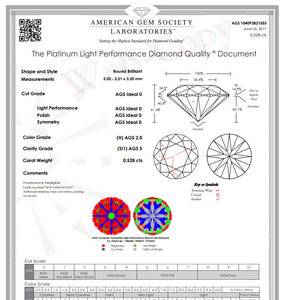- Joined
- Apr 3, 2004
- Messages
- 33,852
Nothing, I'm still alive.What happened to you?
That is true, but I was told by BGD that the pricing gap on flour blue roughs vs none are narrowing these days.Your Octavia is gorgeous. I think some of us are more fluorescence sensitive.
And traditionally, fluorescence in white diamonds comes with a discount, that's why people are suspicious, even if they can't notice it.
That is true, but I was told by BGD that the pricing gap on flour blue roughs vs none are narrowing these days.
Today, a letter grade plus word descriptions of “Faint brown,” “Very Light brown,” and “Light brown” are used for the grade ranges of K–M, N–R, and S–Z, respectively.
Beginning at K, though, gray diamonds receive a word description only of “Faint,” “Very Light,” or “Light” gray for the same letter grade ranges as for brown diamonds
No one will be able to do this because GIA does not remark on colour in the comments section, they would note presence of brown or grey separately, and they don't call colours "undertones" on the report...Can a PSer please post a lab report with the comment of "Brown or Gray undertones" ?


With regard to transparency (hazy,milky), I personally would like to see the labs develop direct reporting on this. It is particularly important for the consumer who is shopping for top levels of cut quality/light performance, which a growing segment of the market is obviously learning to do.
I agree with you Tree. But I think if they were able to quantify transparency, rather than use terms like haziness, it would not be so prejudicial. It would seem technically possible to get an objective transparency measurement. And I think it would provide consumers with important information that otherwise they may never be presented with at the time of their purchase.As @AV_ mentioned, the labs already do mention "hazy", it's just in their own code words. The clarity grade based on XXX not shown code words. Clarity grade based of clouds, twinning wisps, or internal graining not shown can pretty much all be read as "Hey, this diamond has a lot of internal defects which, while we can't distinguish them at 10X, result in reduced transparency of the stone." Because, when looking at dispersed clouds, you often can't really "see" the cloud at 10X. What you can distinguish is the reduced transparency.
But I agree with you 100%. I wish GIA and AGS would be more forthright about this. Because as uninformed consumers, most people don't automatically know that the "clarity grade based" comments mean haze, and they don't know that they should be weary of clouds, twinning wisps, and/or graining if they are the grade-setting inclusions at the SI and below levels. Hell, going back to my early days when I was a naïve young PriceScoper, I almost selected an SI1 diamond with clarity grade based on clouds not shown. I thought "Hey! It's an SI1 but I cannot see any inclusions even at the 40X level. What a deal!!!" Luckily, @gm89uk steered me right.But without PriceScope, I can see how many people could easily be clueless of the inclusions that can potentially result in reduced transparency.
However, if I, or any uninformed consumer, saw "Clarity grade based on haziness" I can almost guarantee you that they would steer far clear of that diamond. So perhaps that's why the labs have not yet resorted to such comments... Great for the consumer. Bad for the vendors trying to pawn off bad quality stones.
Ironically, I believe providing a transparency metric would increase the sales of NON eye-clean stones! A single black crystal that might be technically visible to the naked eye might be an otherwise highly transparent stone that would permit optimal light performance. In my opinion, shoppers often make a mistake by avoiding all diamonds that are not eye-clean. Especially if they are not familiar with the ways that transparency can be subtly compromised by characteristics not visible to the naked eye.
Agree completely.Yes, and more importantly, it would likely lessen the obsession among internet consumers with finding a stone that did not have any visible inclusions at 20X whatsoever. I think this obsession with "20X cleanliness" has come in recent years with the advent the online magnified diamond video technology. One the one hand, being able to see the stone at 20X or 40X is great for allowing you to identify potential problem areas in the stone. But at the same time, many consumers get way too caught up in that little teeny crystal or feather under the table that, while visible at 20X, would be completely invisible under normal viewing conditions. In years past, when people bought diamonds in person and judged eye-cleanliness with, who would've guessed it, their own eyes sans magnification, such small crystals and feathers would've gone completely unnoticed. But now, I imagine it's easier to sell a cloudy "eye-clean" SI2 diamond to am internet consumer than an otherwise crystal-clear SI2 diamond with a single black crystal: What @Garry H (Cut Nut) would refer to as an "Honest" SI2.
Personally, I love crystal inclusions. They're interesting to look at under 10X magnification, and they don't impact light performance if they're limited to a few crystals.Now that I know about diamonds, if I were buying in the SI range, I would much rather have an "honest" SI than a cloudy, milky stone that is eye-clean.
Here's one https://www.jamesallen.com/loose-di...l-color-si2-clarity-excellent-cut-sku-6041910. On JA site, it's fairly easy to pick out faint brown stones just by looking at the grid of K-M rounds but Faint Brown is typically mentioned right next to the color on GIA cert. I've never seen an additional comment about undertones.Can a PSer please post a lab report with the comment of "Brown or Gray undertones" ?
I would like to see the online plots actually look like the real plots. Wink
A given poster dislikes "twining wisps" - others think a feather is a crack.
Thanks TL, so the word "brown" well not appear on the report if the stone is graded J color or higher?
